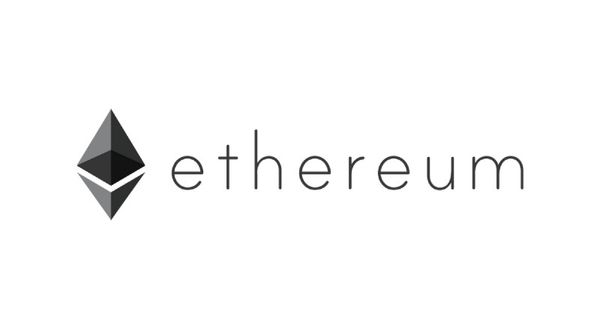Learn how Ethereum is powering the future of decentralized finance
It is hard to imagine how far the cryptocurrency world has evolved since the introduction of Bitcoin. Now, Bitcoin is old news with Ethereum stealing the spotlight in the world of blockchain.
Ethereum is a blockchain-based application platform for building and utilizing decentralized applications. It is under continuous development by programmers around the world as an open-source platform free from central regulation. It is more flexible and adaptable than Bitcoin because Ethereum makes it safe and simple to create and run a new generation of software: Decentralized Applications (DApps).
How does Ethereum work?
The Ethereum platform is similar to many of Bitcoin’s basic designs. It also has some of its own innovative features. Bitcoin is more like a public ledger that shows every transaction to date in a list. The Ethereum network has the functionality of a digital currency as well; the underlying token to transfer value is called Ether (ETH). Users control their money (BTC or Ether) using private keys. The difference with Ethereum is that in addition to user accounts, there are contract accounts. The contract accounts store a code which is triggered with transactions on the network; these accounts are also known as Smart Contracts. One can create a new contract at any time by deploying a code on the blockchain.
The functionality of the contract accounts is controlled by the individual accounts, but the result of the Smart Contract execution is validated by the miners, similar to Bitcoin. In Ethereum, miners run the computations and reach the consensus on the state of the Blockchain. The execution of the code is a deterministic process and users can be certain about the result of the computation because at any time they can check the state of the blockchain.
Instead of paying a simple transaction fee like in the Bitcoin system, in Ethereum users pay for each computation step they activate (for computation and memory storage) while making transactions. The unit to measure the complexity of the computation is called “gas,” and users have an ability to specify the amount of gas they want to send with a specific transaction. This feature protects the network from malicious attacks from hackers.
Like in Bitcoin, all transaction gas is used as a reward for miners. They validate and secure the network by receiving, propagating, verifying and executing transactions. The transactions are then grouped by the miners into blocks. For every successfully mined block, the miners are rewarded with ether. It gives the perfect incentive for the miners to dedicate their computational power to process Ethereum transactions. Right now, the miners of the Ethereum blockchain have a similar task of solving complex mathematical problems for successfully mining a block, called Proof-of-Work.
Ethereum vs Bitcoin
The ability to execute Smart Contracts is the most significant advantage that Ethereum holds over Bitcoin. It allows users to deploy and run custom code on the blockchain. The blockchain provides the decentralization factor in terms of verifying and executing the contracts. The traditional software can interact with these smart contracts via their Application Binary Interface (ABI), similar to API. It provides a much broader application opportunity for the developers and users.
To understand the full importance of that feature you need to view it as a platform. Similarly to Facebook, that let people create their own content and communities, Ethereum lets people digitalize their financial instruments and builds a bridge from existing internet to smart internet money.
Another important difference is in the size of the block. The Bitcoin network has a limitation upon the maximum size of the block to prevent blockchain from growing too fast. On the contrary, there are no hard limitations on the block size in Mb in the Ethereum, but there is a limitation on the amount of gas that can be spent in one block, but it can be increased over time.
The small but handy advantage is “block mining time”. The Bitcoin network is programmed to mine Bitcoins every 10 minutes. This time for Ethereum is reduced to 14 seconds, which makes the transaction settlement speed faster.
Many people also point out the potential downside of Ethereum: Turing-completeness (ability to run any code on the blockchain) makes it really hard to maintain the same level of security as in bitcoin because of increased complexity. It is more likely to have bugs in software that might lead to client crashes, money loss and errors in data. However, same with every new technology, it takes time to come up with a list of best practices, as well as safe and secure ways for everyone to interact with the Ethereum blockchain.
Future development of Ethereum
Switching the consensus algorithm from Proof-of-Work to Proof-of-Stake (PoS) is one of the first items on the Roadmap of Ethereum project. Unequal price for electricity created an unhealthy distribution of nodes in Bitcoin: most of the miners now are concentrated in China, which makes it less secure in case the government wants to interfere in the process of mining.
Alternatively, Casper, PoS implementation in Ethereum, introduces the idea of Security-deposit based security. In order to mine, users should make a deposit in ether (stake) to guarantee their commitment the network. If miners do not behave according to the rules accepted by the majority of nodes (like trying to split the chain of blocks), their stake will be burned in the winning chain.
The PoS consensus protocol will help to decentralize the mining community as it requires significantly fewer resources thus providing an opportunity for anyone to become a miner.
Some might argue that Bitcoin and Ethereum serve different purposes. Bitcoin is usually compared to“digital gold”, whereas Ethereum is compared to a “world computer” or “decentralized internet.” Even so, scalability is the most important concern for most of the blockchain-based systems. Because Ethereum blockchain serves many purposes and not only storing financial transactions, every node should process the computations triggered by any transaction. This leads us to a conclusion that network can not be faster than the slowest computer in it. To address this issue Ethereum will utilize the idea of sharding: splitting the state of the blockchain in k shards and thinking of them as separate blockchains with an ability to transfer money faster within one shard and being able at the same time transact with other shards.
Looking forward
The Ethereum technology is new and continuously developing. Developers are facing real time problems to come up with game-changing solutions. The technology has all the ingredients to become one of the most significant inventions in the history of mankind. It only needs proper guidance and sufficient time to evolve. At Zerion, we create next generation of software — decentralized applications, running on Ethereum. Let’s make the community and the people benefit from this new powerful technology together!
📢 Follow us on Twitter to get latest updates.


